Baltimore-style Crab Cakes
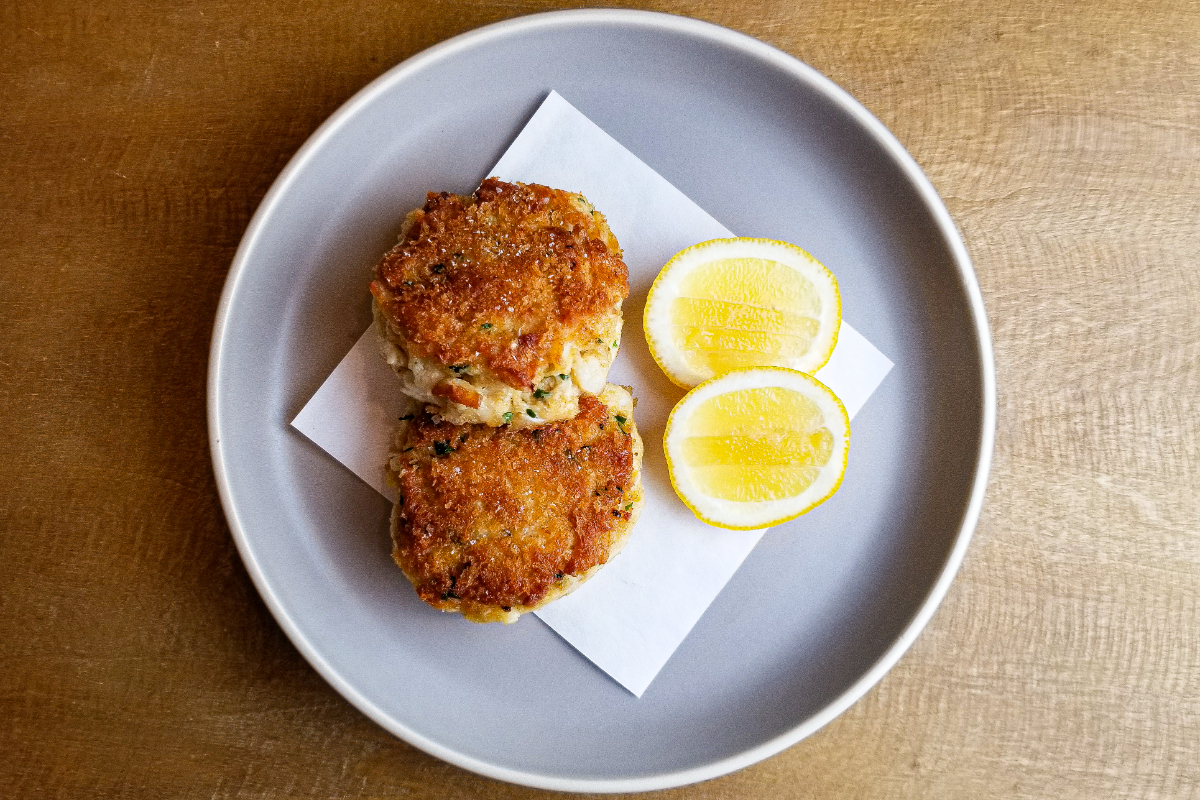
Anyone who grew up near the Chesapeake bay knows how important blue crabs are to the culinary heritage of the region. There are countless ways of preparing them, but the Baltimore-style (or Maryland-style) crab cake is one of the most delicious preparations. While they can certainly be made with other types of crab, I believe the flavor and texture of blue crab to be ideal in this preparation.
Crab cakes have a lot of things going for them. They are super easy to make. They can be cooked in a number of different ways (broiled, fried, sauteed, baked). They are very versatile in how they can be served. And most importantly, they are absolutely delicious.
To elaborate on the versatility of crab cakes, here are just a few of the ways I like to eat them:
- On their own, as an appetizer or entree, with a wedge of lemon and maybe a bit of tartar sauce,
- Formed into smaller one-bite patties, as a canape or snack.
- Served alongside a big juicy steak with some grilled vegetables or sauteed greens.
- As a sandwich, on a soft buttery brioche bun with bacon and tomato.
The crab
As stated before, I prefer using blue crab to make crab cakes. While you could purchase live blue crabs, steam them and then pick the meat yourself, I would highly recommend purchasing picked crabmeat. Blue crabmeat can usually be purchased in one of two ways, fresh and pasteurized. Fresh crabmeat is typically sold in plastic containers and kept refrigerated or on ice. I highly recommend purchasing fresh crabmeat whenever possible as the flavor and texture is much better. Pasteurized crabmeat usually comes in a can and has been heat-treated to make it more shelf stable. While you can occasionally find good-quality pasteurized crabmeat, it is usually not as delicious as its fresh counterpart.
Aside from the fact that crabmeat comes in either fresh or pasteurized forms, blue crab also comes in a few different “grades”. Unfortunately, these grades are not standardized among different crab producers so there may be some differences in the labeling from brand to brand. These grades refer to the part of the crab that the meat is from and the size of the chunks.
- Jumbo lump: This is the “nicest” grade of crabmeat which is comprised of large pieces of crab. It is also by far the most expensive.
- Lump/backfin: This crabmeat is a mix of larger and smaller pieces of white meat.
- Special: This is mostly comprised of small pieces of crabmeat and is a bit less expensive.
- Claw: This is crabmeat that comes from the legs of the crab. The pieces are smaller but have a very “crabby” flavor.
While you can make a great crab cake with any of these grades of meat, I typically prefer to use lump/backfin or jumbo lump. The large pieces of meat make the crab cake a bit more texturally interesting.
Old bay

Use it. It’s delicious.
Assembling the crab cakes
Crabmeat often contains small pieces of shell fragment that were not removed at the processing facility. If you want to make sure there is no shell left, take a few minutes to pick through the meat. Put the crab meat on one side of a large bowl, and using clean hands, carefully pick through the meat, trying to feel for the small pieces of shell. The shell fragments will be very hard to see, so try and rely on your fingers to identify them. Do your best to keep the large pieces of crab intact. As you work through the pile of crabmeat, move the clean meat to the other side of the bowl. Use a small cup of clean water to dip your fingers into to easily rinse away any pieces of shell you find.

Once you have all of the ingredients in a bowl, gently fold everything together. Try not to break up the large pieces of crab meat as you mix. Don’t forget that you can make these crab cakes any size you like, small or large. You can also cook these in a deep fryer, oven, or under the broiler. The trick is to make sure you do not overcook the crab cakes as they may dry out. The center of the cake should be warm, not hot, after cooking.
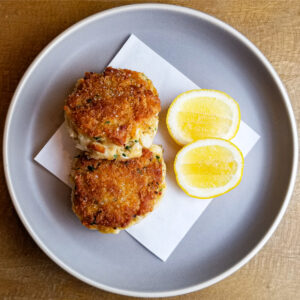
Baltimore-style Crab Cakes
Ingredients
- 1 pound fresh blue crab meat, lump or jumbo lump
- 1 egg, lightly beaten
- 6 Tbsp mayonnaise, preferably Hellman's or Duke's
- 5 Tbsp panko bread crumbs, plus more for topping crab cakes (can substitute other type of white bread crumb)
- 2 tsp worcestershire sauce
- 1/2 tsp tobasco
- 2 tsp Old Bay seasoning
- 1 Tbsp minced shallot or onion
- 1.5 Tbsp chopped parsley
- 1/2 tsp dijon mustard
- salt to taste
- lemon wedges and/or tartar sauce to serve
- olive oil for sauteeing the crabcakes
Instructions
- Pick through the crabmeat to remove any bits of shell that remain (see method in article above).

- Add all of the ingredients (minus the salt, olive oil, and extra breadcrumbs for topping) to a large mixing bowl. Gently fold everything together, trying not to break up the crabmeat, until evenly mixed. Taste the mix to see if you need any additional salt.
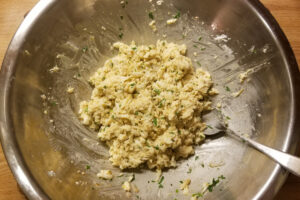
- Form 6 patties.
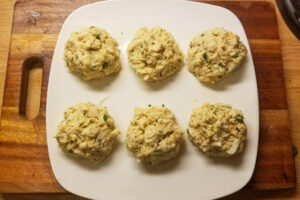
- Top each patty with a layer of breadcrumbs.

- Heat a nonstick pan with some olive oil (about 1/8th inch) over medium-high heat. Place crabcakes top side down (the side with the breadcrumbs) in the olive oil and cook about 4 minutes until golden brown.
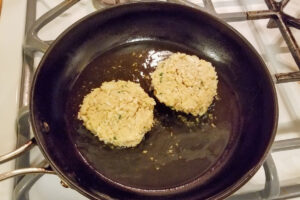
- Flip crabcakes and cook one more minute. This side does not need to get as much color as the first side.
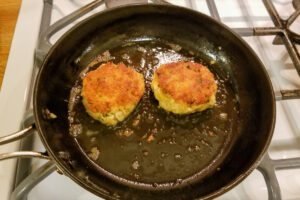
- Remove crabcakes from the pan and place them on paper towels. Season lightly with salt.

- Serve with lemon wedges and/or tartar sauce.

Recipe worked perfectly!